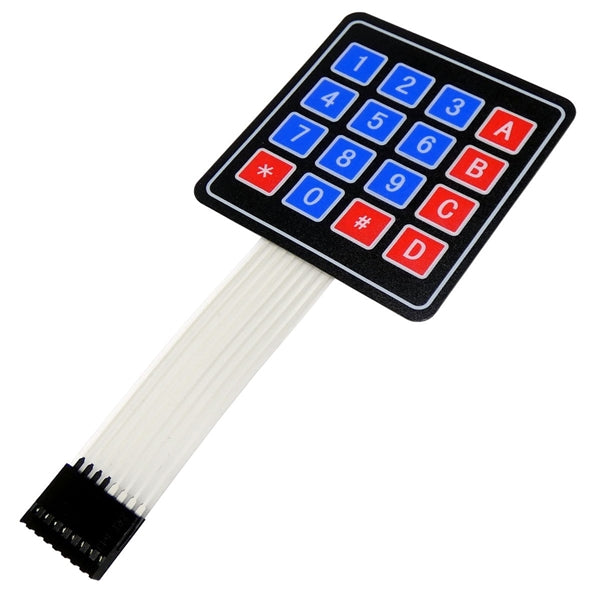Why Membrane Switches Over Are Vital for Durable Control Solution
Membrane layer switches play a critical role in ensuring the durability and reliability of control systems throughout different markets. Their distinct construction enables them to sustain difficult ecological aspects such as moisture, temperature level extremes, and physical wear. This strength not only expands the life expectancy of the systems they serve yet additionally reduces maintenance needs. As we discover the diverse benefits of membrane switches, it becomes evident that their significance transcends plain capability, affecting individual experience and functional efficiency. What more effects do these attributes hold for the future of control system style?
Overview of Membrane Layer Switches
Membrane layer switches are flexible and trusted parts commonly used in different digital control systems. These buttons are composed of several layers, consisting of a visuals overlay, a spacer layer, and a printed circuit layer. The graphic overlay offers both practical and aesthetic layout, while the spacer layer ensures that the buttons are turned on just when pushed. The published circuit layer contains conductive traces that complete an electrical circuit when the membrane is pressed, making it possible for the gadget to react to customer inputs.
Membrane layer buttons are typically preferred in applications calling for a small and light-weight layout, making them suitable for handheld devices, medical devices, and commercial machinery. They can be tailored to meet certain customer demands and can integrate various attributes such as backlighting, tactile comments, and several shades. Moreover, membrane layer buttons are immune to dust, moisture, and impurities, making them appropriate for atmospheres where toughness is vital.
Benefits of Resilience
In several applications, the resilience of membrane switches over offers significant advantages that enhance their total efficiency and dependability. These switches are created to hold up against rough environments, making them ideal for usage popular conditions such as high humidity, severe temperature levels, and exposure to chemicals. Their robust construction helps to stop damage from physical influence, ensuring lasting performance and reducing the need for regular substitutes.
Furthermore, membrane switches are resistant to damage, which is essential in applications where frequent interaction takes place. This sturdiness translates to decrease maintenance costs, as companies benefit from lowered downtime and less service disruptions. The encapsulated style of membrane switches safeguards interior parts from dirt and moisture ingress, further contributing to their life expectancy (membrane switch).
Another benefit is their capability to preserve consistent efficiency in time. With a high resistance for mechanical anxiety, these switches maintain their responsive responses and electric stability, making sure individual contentment. Ultimately, the resilience of membrane switches over not just boosts functional efficiency yet likewise fosters confidence in their integrity, making them a recommended option for control systems throughout different fields.
Applications in Numerous Industries
Long lasting control systems employing membrane layer switches discover extensive applications throughout a series of sectors, each gaining from the unique attributes these buttons offer. In the medical market, membrane buttons are vital for tools such as client screens and diagnostic devices, where dependability and simplicity of cleansing are critical. Their resistance to wetness and contaminants guarantees they preserve performance in clean and sterile settings.
The vehicle industry leverages membrane layer buttons for control panel controls and infotainment systems, where they supply sleek, inconspicuous interfaces that boost user experience. These More Help switches are also made to stand up to severe problems, including exposure to extreme temperatures and vibrations.
In industrial setups, membrane layer buttons are commonly used in equipment control panels, using responsive comments and durability required for high-usage applications. Their ability to withstand chemicals makes them appropriate for producing atmospheres where spills and contaminants are frequent.

Consumer electronics, such as cooking area appliances and remote controls, additionally make use of membrane switches for their convenience and cost-effectiveness. Generally, the versatility and durable nature of membrane layer changes make them vital across various fields, ensuring efficient operation and long life in control systems.
Design and Visual Appeal
While capability is paramount, the style and aesthetic charm of control systems equipped with membrane buttons play a crucial duty in individual involvement and total experience (membrane switch). The aesthetic style of these buttons can considerably affect individual perception and communication. A well-designed membrane layer button enhances the appearance of the tool, making it much more attractive to individuals and promoting a connection between the user and the product
Membrane switches use a good deal of adaptability in style, permitting suppliers to customize graphics, colors, and appearances to align with brand identification and product appearances. The usage of lively shades and distinct patterns can attract attention, while responsive feedback can enhance the individual's communication with the tool. In addition, the capacity to integrate LED indicators and find backlighting right into the membrane button style supplies both useful and visual advantages, enhancing exposure and functionality in different settings.

Enhancing Individual Experience

In addition, membrane buttons can be tailored to incorporate graphical interfaces, enhancing usability i loved this by presenting information in a clear and intuitive manner (membrane switch). This customization can include symbols, tags, and shade coding that overview customers via facility capabilities easily. Furthermore, their convenience enables for assimilation in different atmospheres, guaranteeing consistent performance whether in commercial equipment or customer electronic devices
The toughness of membrane layer switches additionally plays an important function in user experience. By withstanding harsh problems and expanded use, these switches reduce the chance of system failings, therefore promoting reliability and customer self-confidence. Inevitably, the calculated use membrane switches not only boosts performance but additionally dramatically enhances user communication with control systems, making them a vital element in modern design.
Conclusion
